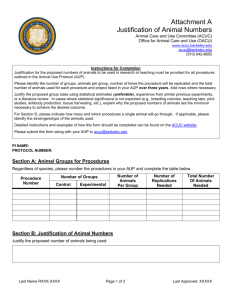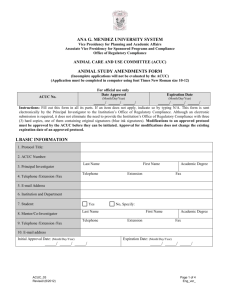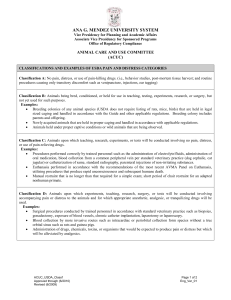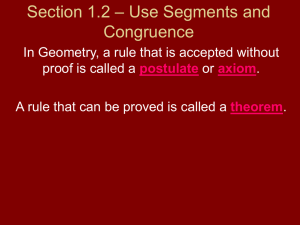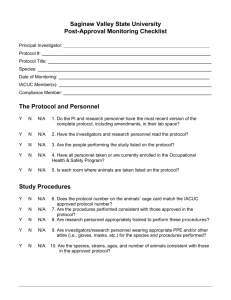Ensuring Congruence Between Grants and ACUC Protocols
advertisement
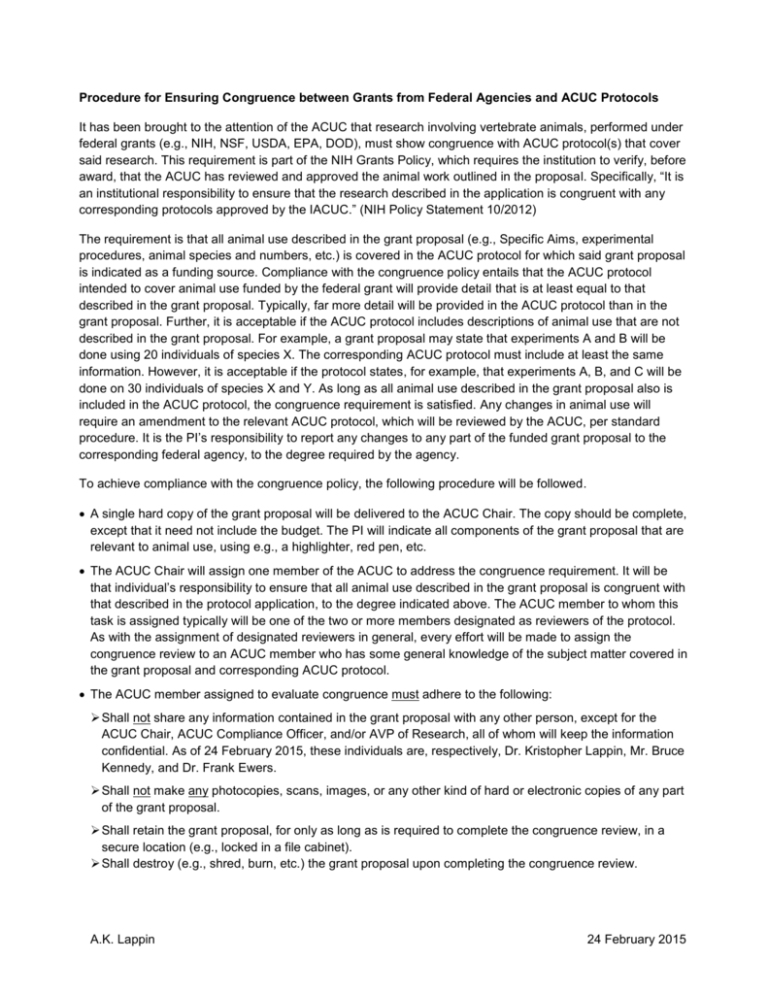
Procedure for Ensuring Congruence between Grants from Federal Agencies and ACUC Protocols It has been brought to the attention of the ACUC that research involving vertebrate animals, performed under federal grants (e.g., NIH, NSF, USDA, EPA, DOD), must show congruence with ACUC protocol(s) that cover said research. This requirement is part of the NIH Grants Policy, which requires the institution to verify, before award, that the ACUC has reviewed and approved the animal work outlined in the proposal. Specifically, “It is an institutional responsibility to ensure that the research described in the application is congruent with any corresponding protocols approved by the IACUC.” (NIH Policy Statement 10/2012) The requirement is that all animal use described in the grant proposal (e.g., Specific Aims, experimental procedures, animal species and numbers, etc.) is covered in the ACUC protocol for which said grant proposal is indicated as a funding source. Compliance with the congruence policy entails that the ACUC protocol intended to cover animal use funded by the federal grant will provide detail that is at least equal to that described in the grant proposal. Typically, far more detail will be provided in the ACUC protocol than in the grant proposal. Further, it is acceptable if the ACUC protocol includes descriptions of animal use that are not described in the grant proposal. For example, a grant proposal may state that experiments A and B will be done using 20 individuals of species X. The corresponding ACUC protocol must include at least the same information. However, it is acceptable if the protocol states, for example, that experiments A, B, and C will be done on 30 individuals of species X and Y. As long as all animal use described in the grant proposal also is included in the ACUC protocol, the congruence requirement is satisfied. Any changes in animal use will require an amendment to the relevant ACUC protocol, which will be reviewed by the ACUC, per standard procedure. It is the PI’s responsibility to report any changes to any part of the funded grant proposal to the corresponding federal agency, to the degree required by the agency. To achieve compliance with the congruence policy, the following procedure will be followed. A single hard copy of the grant proposal will be delivered to the ACUC Chair. The copy should be complete, except that it need not include the budget. The PI will indicate all components of the grant proposal that are relevant to animal use, using e.g., a highlighter, red pen, etc. The ACUC Chair will assign one member of the ACUC to address the congruence requirement. It will be that individual’s responsibility to ensure that all animal use described in the grant proposal is congruent with that described in the protocol application, to the degree indicated above. The ACUC member to whom this task is assigned typically will be one of the two or more members designated as reviewers of the protocol. As with the assignment of designated reviewers in general, every effort will be made to assign the congruence review to an ACUC member who has some general knowledge of the subject matter covered in the grant proposal and corresponding ACUC protocol. The ACUC member assigned to evaluate congruence must adhere to the following: Shall not share any information contained in the grant proposal with any other person, except for the ACUC Chair, ACUC Compliance Officer, and/or AVP of Research, all of whom will keep the information confidential. As of 24 February 2015, these individuals are, respectively, Dr. Kristopher Lappin, Mr. Bruce Kennedy, and Dr. Frank Ewers. Shall not make any photocopies, scans, images, or any other kind of hard or electronic copies of any part of the grant proposal. Shall retain the grant proposal, for only as long as is required to complete the congruence review, in a secure location (e.g., locked in a file cabinet). Shall destroy (e.g., shred, burn, etc.) the grant proposal upon completing the congruence review. A.K. Lappin 24 February 2015
